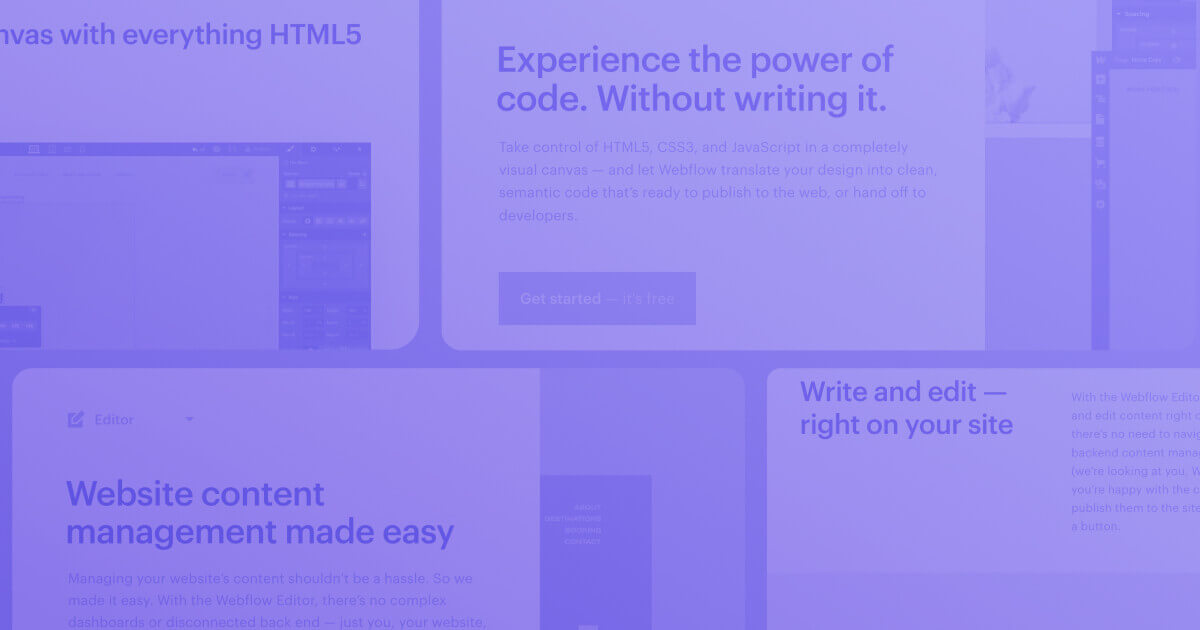
The Impact of Web Design on SEO and User Engagement
Key takeaways
- Web design, SEO, and UX together drive visibility and user engagement.
- Clean code, fast speed, and structured navigation strengthen SEO performance.
- Mobile-friendly design is essential as most traffic comes from mobile devices.
- Faster sites rank higher and keep users from bouncing.
- Strong UX increases dwell time and signals content quality to search engines.
- Clear navigation, visuals, and CTAs improve interaction and conversions.
In a digital marketing landscape, where time is of the essence, the combination of web design, SEO, and user interaction is critical. In this article, we will explore the relationship between these and how they are interrelated.
We will explore the fundamentals of good design – from simple navigation to mobile responsiveness – and discuss how these aspects increase your website’s search rankings and ensure high user engagement.
Everyone who owns an online presence must constantly be aware of the role that design plays in both search engine visibility and user experience. Take part with us as we delve into the secret that harnesses web design for improving SEO rankings and elevating your audience engagement.
{{cta}}
Overview of Technical SEO Basics Related to Web Design

In the landscape of SEO-friendly web design, the pivotal role of meticulously crafted code and an intuitively structured website is undeniable. To ensure your website stands out in the competitive digital arena, consider these essential elements:
- Clean Code: Crucial for building your site in such a way that search engines can easily interpret it, which will increase its rankings.
- Structured URL Paths: Logical URLs also play an important role in the efficient indexing of which search engines quickly rank your pages.
- Navigation Hierarchy: Well-structured navigation makes sure that search engines are able to crawl your site smoothly, promoting its visibility.
- Mobile Optimization: Due to the growing use of mobile browsing, it is of great importance that your site is mobile-friendly to enhance search engine optimization.
- Loading Speed: The speed with which a site loads greatly affects both its ranking in the search engine results page (SERP) and its user engagement.
- Accessibility: In addition to a wider reach, an easily accessible website will also have better visibility in the search results.
- Use of Header Tags: Proper usage of the header tags (H1, H2, H3) allows the search engines to see the content structure, and to have information about its indexing.
By focusing on these key aspects, you create a robust foundation for your website that not only enhances its SEO performance but also improves user experience.
This strategic approach ensures your content gains the visibility and ranking it truly deserves, solidifying your presence in the digital marketplace.
Importance of Mobile Optimization for SEO

According to statistical data, at present time, 58.67% of global traffic of the sites comes exactly from mobile devices. That is why this change has been so vibrant, attracting search engines to pay due attention to ranking sites on mobile-supported sites.
Since the web is becoming purely mobile, the design can be developed with the mobile user in mind. This can only be done with the use of responsive design techniques that will make your site look good and function properly on every device.
Tips include using flexible layouts, touch-friendly navigation elements, and testing your site across multiple devices to ensure your site performs efficiently.
The Effect of Website Speed on SEO

Website speed is a critical factor that significantly impacts SEO and, by extension, the visibility of your site in search engine results. Here's why:
- Improved Rankings: Search engines, especially Google, give priority to websites that load fast. The fast-loading site is likely to be placed on top of search results because speed is one of the important factors of user experience.
- Lower Bounce Rates: Usually, users rush off from slow websites, which results in heavy bounce rates. On the one hand, a speedy website indirectly suggests to the search engines that your content is worthwhile, and therefore, your SEO by keeping the users engaged.
- Enhanced User Experience: Speed ensures high user engagement. A Website that loads fast is more enjoyable to navigate; therefore the users become more interested in going through the content. Such higher interaction improves SEO by showing the Search engines the site's relevance and quality.
- Mobile Optimization: With the tendency to access the internet via mobile devices for more and more people, fast loading speed is a must. The mobile audience demands immediate response and speed is the most important element for mobile SEO.
By focusing on optimizing your website's speed, you not only elevate your SEO performance but also enhance user satisfaction, leading to a more successful and visible online presence.
How User Experience Influences SEO

User experience (UX) plays a pivotal role in SEO, directly influencing a website’s ranking and visibility. Here’s how a positive UX boosts SEO:
- Reduced Bounce Rates: Sites with intuitive navigation and attractive interfaces tend to make users stay longer (the bouncing rate is low). For example, when users browse with Amazon’s easy-to-use interface and get personalized recommendations, they stay longer on the site. This boosts Amazon’s SEO.
- Increased Dwell Time: An interface that is user-oriented keeps the users on the website for more time, walking through more material. The longer time that visitors spend on a site shows search engines that this site is worth a higher ranking due to the new and interesting content.
- Enhanced Mobile Experience: Mobile browsing is now predominant so a mobile-friendly design is imperative. Mobile-friendly websites, like Pinterest, have features that ensure smooth navigation and quick loading time, which help to boost their SEO.
- Quality Content: Successful content that targets the audience’s needs and interests boosts retention rate. Content, like tutorials and clever blog posts, can keep users on the site for many minutes more, and this, too, is recognized by search engines.
In essence, by focusing on creating a superior user experience, websites can significantly enhance their SEO outcomes, leading to better visibility and higher engagement.
Incorporating SEO-Friendly Design Practices

To make SEO an integral part of your web design, you should utilize header tags (H1, H2, H3) and meta descriptions appropriately from the beginning. These components enable search engines to see the depth of your pages and the content, and therefore, make the connection between your site and the query.
Don’t forget to mention that the application of accessible and inclusive design principles makes it reachable to more people, including those with disabilities. This can serve 2 purposes: it will follow ethical standards and will extend your site's potential audience and SEO metrics.
How Navigation Affects User Retention

Intuitive and easy site navigation is of great importance as it contributes to a positive user experience. Best practices include a structured, easy-to-follow, and low-effort way of helping users to navigate the site and quickly locate information.
The uniqueness of modern navigation systems, e.g. a sticky menu or mega footer, makes ease of use and accessibility available throughout the page.
Such techniques aid in keeping the readers, as they have no difficulty when using the site, offering them a better experience.
The Role of Visual Elements in Engaging Users

Visual elements, particularly through the lens of color theory, play a crucial role in shaping user engagement. Understanding the psychological impact of colors can guide the mood and behavior of website visitors, steering their perceptions and interactions in subtle ways.
Similarly, the judicious use of images and videos can greatly enhance user dwell time on a webpage. By employing these elements with a deep understanding of color theory, designers can craft narratives that stir emotions and forge a stronger bond between the audience and the content.
Content Layout Strategies to Encourage Interaction

The way content is laid out on your site can significantly influence user interaction. Techniques that enhance readability and promote interaction include organizing content in a logical flow and using headings and subheadings for clarity.
The strategic use of whitespace and content hierarchy can guide users through your site, making information consumption effortless and engaging.
This thoughtful arrangement encourages users to interact more with the content, whether it’s reading articles, signing up for newsletters, or participating in discussions.
Leveraging Design for Conversion Optimization

Conversion optimization is another critical aspect of web design. The placement and design of calls-to-action (CTAs) can dramatically affect conversion rates. A CTA that is visually striking and strategically placed can draw users’ attention and prompt them to take action.
Furthermore, A/B testing plays a vital role in refining these elements, allowing designers to understand what works best in engaging users and encouraging conversions.
In conclusion, the intricate relationship between web design, SEO, and user engagement is undeniable and essential for the success of any online platform. Through the strategic integration of SEO-friendly practices and user-centric design principles, websites can achieve higher visibility and more meaningful interactions with their audience.
Through this article, we have emphasized the significance of clean code, mobile optimization, website speed, and visual elements that captivate users and lead to impressive rankings in the search engine. Not only is web design culturally impactful for the visual aspects, but it is also a crucial factor in the digital world that ensures an online presence and engagement.
Frequently Asked Questions
How does web design directly influence search engine rankings?
Web design affects rankings through clean code, logical URL structures, crawlable navigation, fast loading times, and mobile responsiveness. These elements help search engines interpret and index pages efficiently while signaling strong user experience, which contributes to improved visibility on search engine results pages.
What are the most important technical SEO elements to include during the design phase?
Key elements include semantic, clean HTML, structured URL paths, clear navigation hierarchy, proper use of header tags (H1–H3), fast-loading assets, mobile-responsive layouts, and accessibility best practices. Implementing these from the start reduces rework and builds a solid foundation for organic growth.
Why is mobile optimization critical for modern SEO performance?
With mobile devices driving most global web traffic, search engines prioritize mobile-friendly sites. Responsive design, touch-friendly navigation, and fast loading on smaller screens improve usability, reduce bounce rates, and align with mobile-first indexing, all of which strengthen overall SEO performance and visibility.
How can I improve website speed to boost both SEO and user engagement?
Speed can be improved by compressing images, minifying CSS and JavaScript, leveraging browser caching, using a content delivery network, and optimizing server response times. Faster pages reduce abandonment, increase dwell time, and meet search engines’ performance expectations, positively affecting rankings and conversions.
What navigation best practices help retain users and support SEO?
Effective navigation uses a clear hierarchy, descriptive menu labels, shallow click depth, and consistent placement across pages. Enhancements like sticky menus or mega footers simplify exploration, helping users find information quickly while enabling search engines to crawl more pages efficiently.
How should visual elements be used to enhance engagement without hurting SEO?
Visuals should support content by using optimized image sizes, descriptive alt text, and formats that load quickly. Applying color theory and thoughtful imagery can guide attention and emotions, increasing dwell time and interaction while maintaining performance standards that search engines reward.
What design tactics are most effective for turning traffic into conversions?
Effective tactics include prominent, visually distinct calls-to-action, logical content flow toward conversion points, clear value propositions, and minimal distractions around CTAs. Ongoing A/B testing of layouts, colors, and copy reveals which variations generate higher sign-ups, purchases, or inquiries.






.svg)










.png)






.png)

.png)
.png)








.svg)

.png)
.png)
.webp)
.svg)

